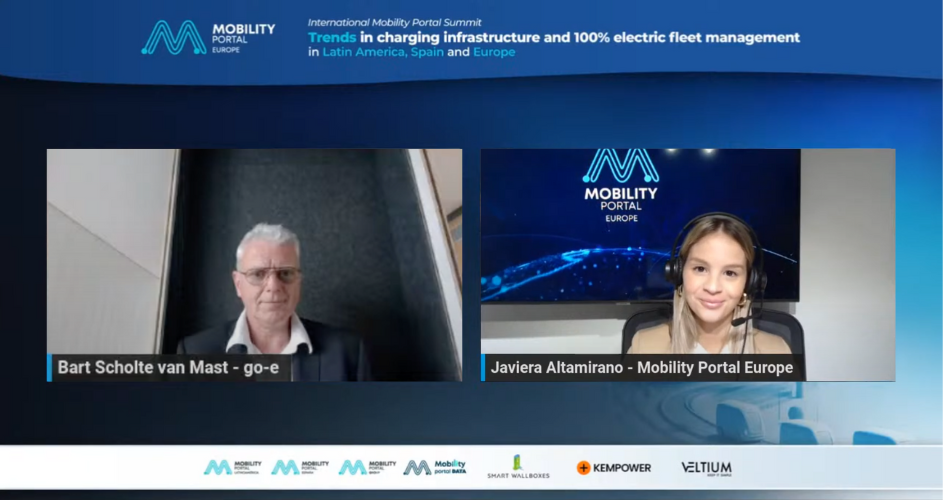In a context where European countries are striving to transition to eMobility, go-e aims to make this sector an “available for all” alternative, starting in Austria, the company’s home country.

“We want to make electromobility the most economical form of personal transport. Otherwise, it will not be accepted”, explains Bart Scholte van Mast, Business Innovation Manager at go-e, during the International Mobility Portal Summit organized by Mobility Portal Europe.
In this regard, the charging station manufacturer plans to launch a project in collaboration with government authorities and its Austrian partners, such as electricity providers.
This initiative aims to determine “what legislation can do and how it can make charging cost-effective, scalable, and available everywhere.”
Scholte van Mast also emphasizes that the new chargers that need to be built “must be designed for cars that are not yet on the road.”
He continues: “Consumers of these future cars will only buy them if the infrastructure is already available.”
In line with this, it is worth noting that go-e is currently working on a full range of new products to reduce the total cost of sustainable mobility.
These charging devices are low-power, meaning they operate with alternating current (AC) and are capable of selecting the best time to charge the car’s batteries.
Why choose slow chargers over fast ones according to go-e?
According to go-e, low-power charging for EVs offers multiple benefits, especially for home charging.
It is designed to be compatible with the energy supply capacity of homes, which are not equipped to support high-power loads with hundreds of kilowatts.
Additionally, most electric cars, particularly more affordable models, cannot handle very high power levels, explains Scholte van Mast.
In reality, most electric vehicles travel between 30 and 50 kilometers per day, and with a power of 22 kilowatts, it is possible to charge a car at home in less than half an hour.

One drawback of fast charging is its impact on prolonging battery life.
“Keeping batteries from being overcharged or excessively discharged, ideally around 50 percent of their capacity, and avoiding high-power charging significantly contributes to their longevity”, suggests van Mast.
Finally, it is worth mentioning that low-power charging generates less thermal and electrical stress on the car’s charging system, reducing wear on the components.
However, the home charging sector is not without challenges.
“In urban environments, we notice obstacles arising because the electrical grids in cities do not support residential charging at the required level”, details Scholte van Mast.
Furthermore, a large portion of the population cannot park their car next to a wall, making the installation of wallboxes impossible.
What is the current state of electromobility in Austria?
Like other countries in the region, the electromobility sector in Austria is still lagging behind European targets.
Currently, less than three per cent of the cars on the roads are electric.
Reaching this percentage has required significant effort from the sector.
Furthermore, Scholte van Mast comments that in the last quarter, sales have stagnated, causing the figures for recent registrations to decrease by five per cent.
What is causing this decline?
According to go-e, this marks the end of the “first phase of electromobility adoption.”
In this phase, the “early adopters” followed market trends and the desire to flaunt the latest technologies, acquiring products – in this case, electric vehicles (EVs) – without giving much consideration to the other factors that determine their proper use.
With this stage concluded, the industry must now persuade the skeptics.
In this context, the main factor hindering the acceptance of EVs is the price.
“This factor is important for companies in general, especially leasing companies, and even more so for individuals,” explains van Mast.
Additionally, there are concerns related to the viability of the second-hand market, vehicle safety, and the use of lithium.








